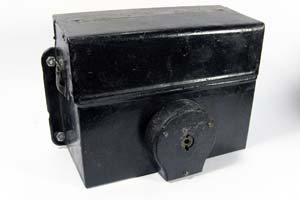
Typical coil box and ignition switch for Model T Ford, 1914 to 1918. |
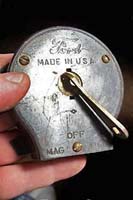
Close-up of switch. This particular one is a Briggs & Stratton replacement switch from e-bay. |
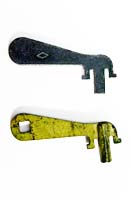
Although a bit different in appearance, these keys are interchangeable. |

The two prongs on this add-on lock operate the original lock. |
This type of switch was introduced with the 1914 Model T Ford. It was used exclusively for five years through 1918, after which a new style switch was used that would accomodate electric starters. One of the problems that emerged with such widespread use was that there were so many automobiles which used the same key. Think of it - there were nearly 2 1/2 million Model T Fords produced between 1914 and 1918, and they all used the same key!
Many different manufacturers provided after market products to resolve this problem. While various replacement switches were available, the units shown here provide only a locking mechanism. These locks did not actually replace the Ford ignition lock, but were attached to the outside of it, some covering the entire switch , others just covering the surface plate. |
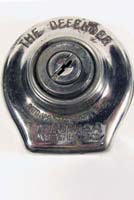
Defender assembly uses a new style King lock. |
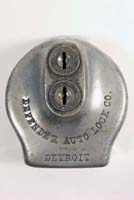
This dual locking Defender uses two Chicago Cabinet Co. locks. The upper lock appears to be for the top of the coil box. |
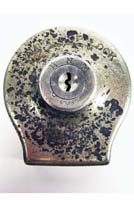
This Auto-Cop-Lock uses the old style King lock. |
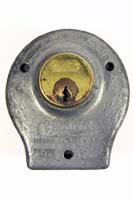
The Goodrich Company of Philadelphia spent extra for the Yale pin-tumbler lock, but made up for that with a cheap casing . |
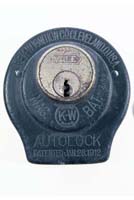
This KW Autolock combines a an exceptional Yale pin-tumbler lock with a high quality steel casing. |
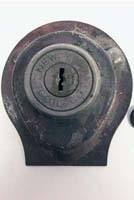
The New York Lock Company used a Chicago Cabinet lock in this assembly. |
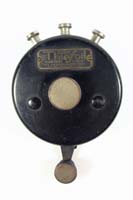
The Thiefoil combinatiion lock was a product of Caskey-Dupree of Marietta, Ohio. |
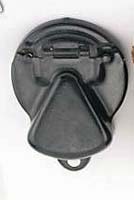
This unit, seen on e-bay, is essentially a lockable cover. Driver to supply his own padlock. |
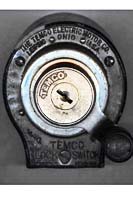
Another e-bay item, this Temco provides a kick switch lever. It appears to use a Chicago Cabinet lock. |
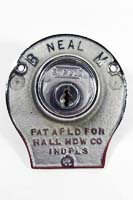
This Neal ignition lock is solidly constructed of chromed cast brass and has a Yale pin-tumbler lock. |
|
|
|
|
|
|